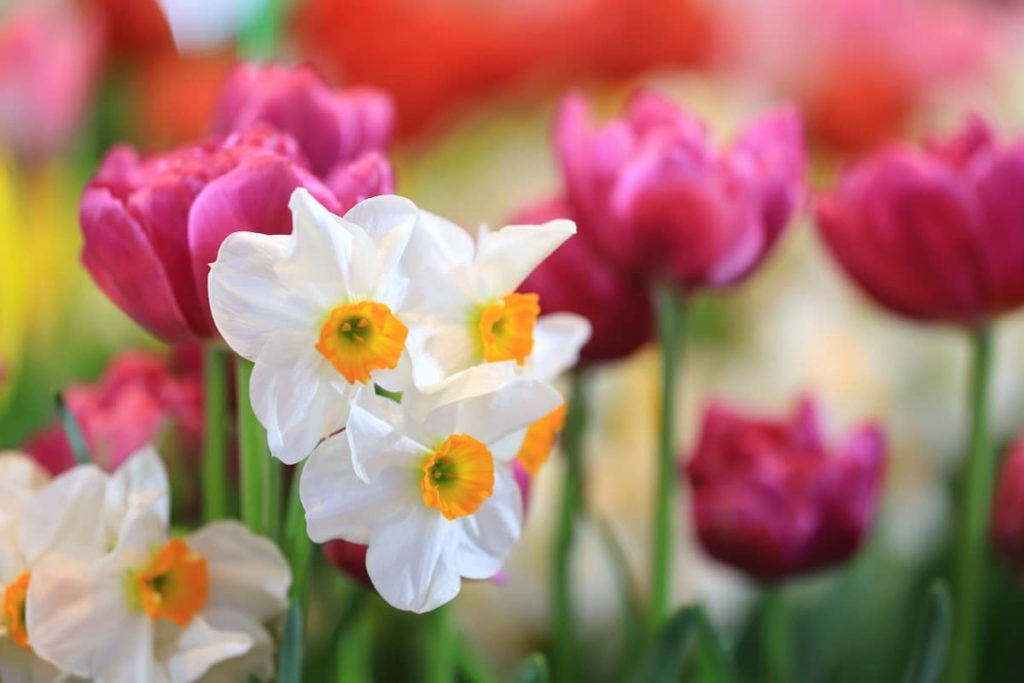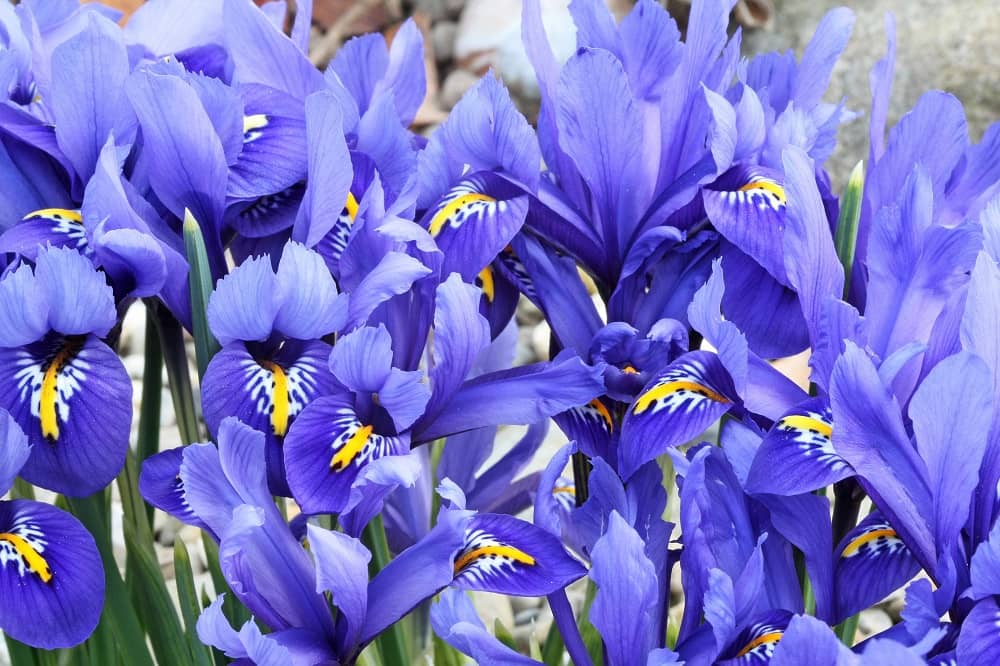Summer Gardening: How to Plant Bulbs for a Rainbow of Colours
 Nothing says summer like bright sunshine and bright, beautiful flowers. And some of the most elegant, colourful flowers blossom from potted bulbs.
Nothing says summer like bright sunshine and bright, beautiful flowers. And some of the most elegant, colourful flowers blossom from potted bulbs.
Bulbs are easy to plant, they are easier to nurture than starting your flower garden from seeds and they have low maintenance requirements.
When you plot out your flower garden with a variety of bulbs to mature at different intervals, you’ll get to enjoy the blooming rainbow of colours from late spring all the way through the summer months into early autumn.
Bulbs are sturdy and resilient, and with the basic techniques listed below, you’ll have a garden that your neighbours will envy. When planted along the outside of your home, the blossoming bulbs add a touch of elegance and eye appeal. If you have a limited amount of outdoor space, you can dedicate a small corner area for your private rainbow pallet. Smaller bulb flowers can line a driveway, patio, or walkway.
Ideal Soil for Bulbs
Because the root system for bulbs is not large, they can be planted in the ground or in pots. Bulbs get a good start when place in freely drained soil.
A blend of Bibra Lake Soils Potting Mix and Soil Conditioner is ideal for both indoor pots and outdoor planting. If your soil is still a bit soggy from the spring rains, you can improve the drainage of outdoor plants by raising up your flower beds before planting your bulbs.
Bulb Spacing and Depth
Always read the planting instructions for your specific bulbs. With few exemptions, bulbs are planted at a depth that is twice as deep as the length of the bulbs with their tapered ends pointing upwards.
Space the distance between bulbs at twice the size of the bulbs. If you cannot determine the top of the bulbs, plant them on their sides and the shoots will grow toward the surface.
Transferring Bulbs from the Indoors to the Garden
Bulbs that are planted in pots can easily be transferred to the garden once their stems have emerged and their flowers start to bloom. See the list of bulb planting locations below for selecting the optimum outdoor blooming positions that will best suit your specific bulbs.
While most bulbs will thrive in full sunlight, there are other bulbs that require some shade to produce their best foliage and flowers. The warmer the climate and the stronger the sunlight, the more shade your flower bed will need.
Prepare your garden bed by loosening the soil with a multi-clawed hand cultivator/garden fork in the spots where the transplants will be placed remembering to space the flowers at a 2-bulb length distance from each other.
Use a hand transplanter trowel and the soil from the pots to place the flowering plant into the ground. Add a thin layer of nutrients with Bibra Lake Soils Sheep Manure and moisturise the soil once the plants are in the garden.
Bulbs that Love Sunny Locations
The following bulbs enjoy sunny locations during moderate temperatures. When the temperatures rise, they will require a few hours of shade every day.
- Alliums
- Anemones
- Brodiaea
- Daffodils
- Dutch Iris
- Freesias
- Gladioli Species
- Grape Hyacinths
- Hyacinths
- Ixias
- Lachenalias
- Ranunculi
- Sparaxis
- Spring Star Flowers

Bulbs that Love Shady Locations
Unlike bulbs that love sunny locations, the following bulbs can thrive if exposed to a few hours of full sun daily, but they prefer a lightly shaded area or filtered light.
- Anemones
- Bluebells
- Cuban Lilies
- Daffodils
- Dutch Crocus
- Grape Hyacinths
- Hyacinths
- Lachenalias
- Tulips
Smaller Bulbs that Love Rockeries
If you have a rock garden, a water fountain, or a dedicated statuary area that is begging for some smaller, colourful, ground covering that will accentuate the special lawn feature, you may want to consider one or more of the following bulbs.
- Babiana
- Blue Bells
- Cuban Lilies
- Daffodils
- Dutch Iris
- Grape Hyacinths
- Lachenalias
- Rain Lilies
- Rock Tulips
- Spring Star Flowers

Bulb Maintenance
- Pest Control – Planting mint at the edges of large flower beds or in the centre of smaller flower beds will help to keep garden pests such as rodents and bats away from your flowers. These pests do not like the smell of mint and will stay away.
- Nourishment – You can help your bulbs get a good start once you have planted them by adding a top layer of Bibra Lake Soils fertilising Potting Mix. Once your bulbs have flowered, the roots will be absorbing nutrients in preparation for next year’s planting season. This is the time to apply another top layer of nourishing Bibra Lake Soils Sheep Manure fertiliser.
- Moisture – Bulbs perform well when the soil is kept moist during their active growing phase that can extend from their initial planting all the way into early summer. Begin watering your budding flowers when their green shoots first emerge and continue this routine watering until the plants start to turn yellow after their flowering stops. Dig up the bulbs and place them in a dry local if there is an unusual amount of summer rainfall.
Growing Amaryllis for the Holidays
Bring the beauty of your holiday floral decorations indoors with Amaryllis, genus Hippeastrum, also known as the Christmas Lily and the Barbados Lily. When planted in the spring, the aromatic, regal, and beautiful trumpet-shaped lilies bloom in a brilliant array of colours from pure whites to bold reds.
When planted during the springtime, they will blossom just in time for the December holidays. You can easily grow them in festive pots to place around your home or to give as holiday presents. After the holidays you can transplant the lilies outdoors to add a vibrant touch of colour to your flower garden.
Saving Bulbs for Next Year’s Gardening
Before taking bulbs out of the ground to save for next year’s gardening season, be sure that the foliage has died down. Use either a multi-clawed hand cultivator or a fork to loosen the soil around the bulbs before gently grasping the stems to pull them out of the ground. Place the bulbs in a dry, shaded location to let the soil dry out.
Clean off all of the dried soil while leaving the thin protective bulb covering intact and take off any remaining flower stalks. Finally, place the bulbs in a cloth or burlap bag and store in a safe, dry, cool storage area where they will remain until you are ready to divide the bulbs and plant them again during the next gardening season. When cared for properly, you will have an abundance of strong, healthy bulbs for many years to come.
When you are ready to start your seasonal bulb planting, Bibra Lake Soils can help you with all of your potting and planting needs. We are locally situated at 222 Barrington Street, Bibra Lake WA 6163, and we are open 7 days a week. You are invited to come shop with us and to call us on (08) 9434 2290 to talk with any of our friendly, knowledgeable gardening staff members.


